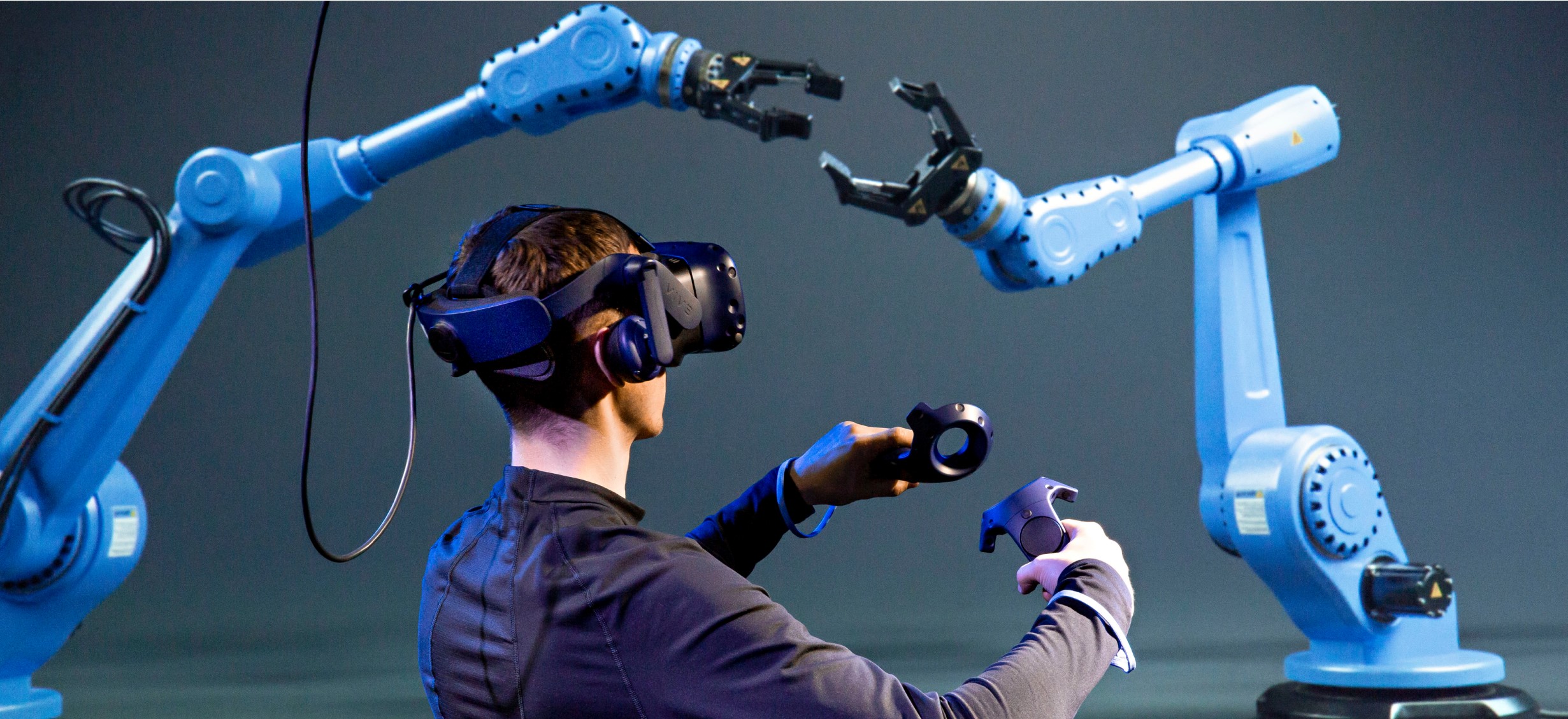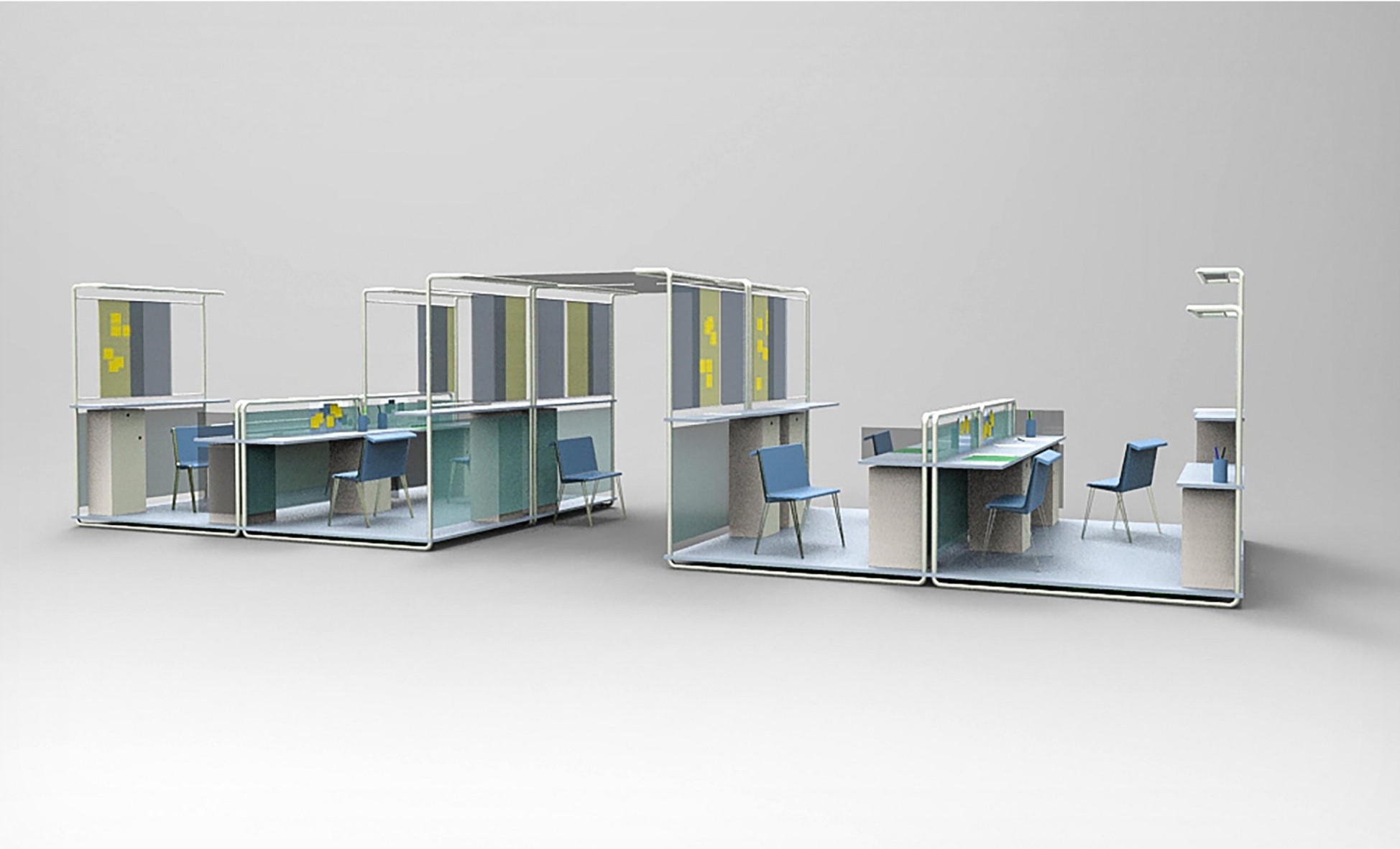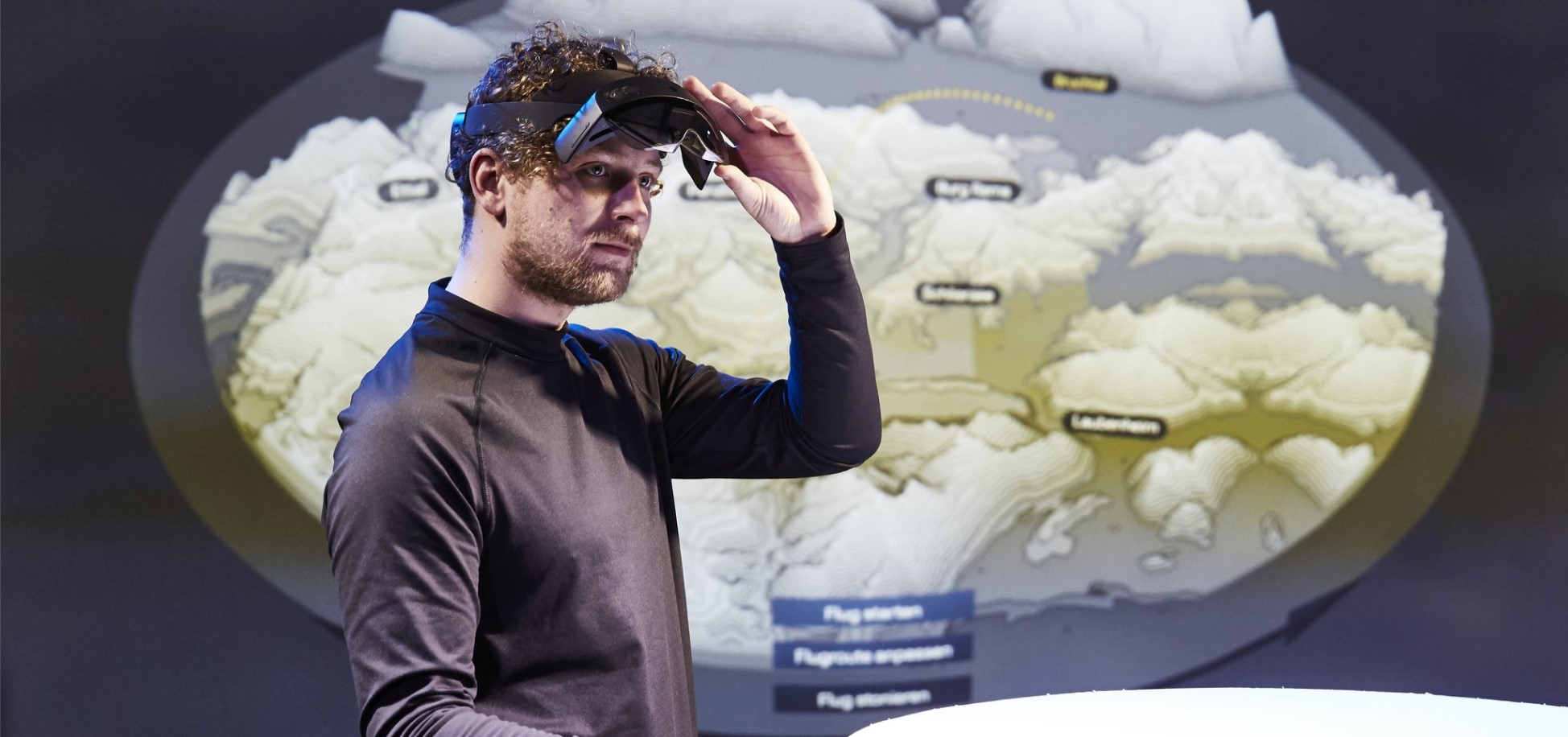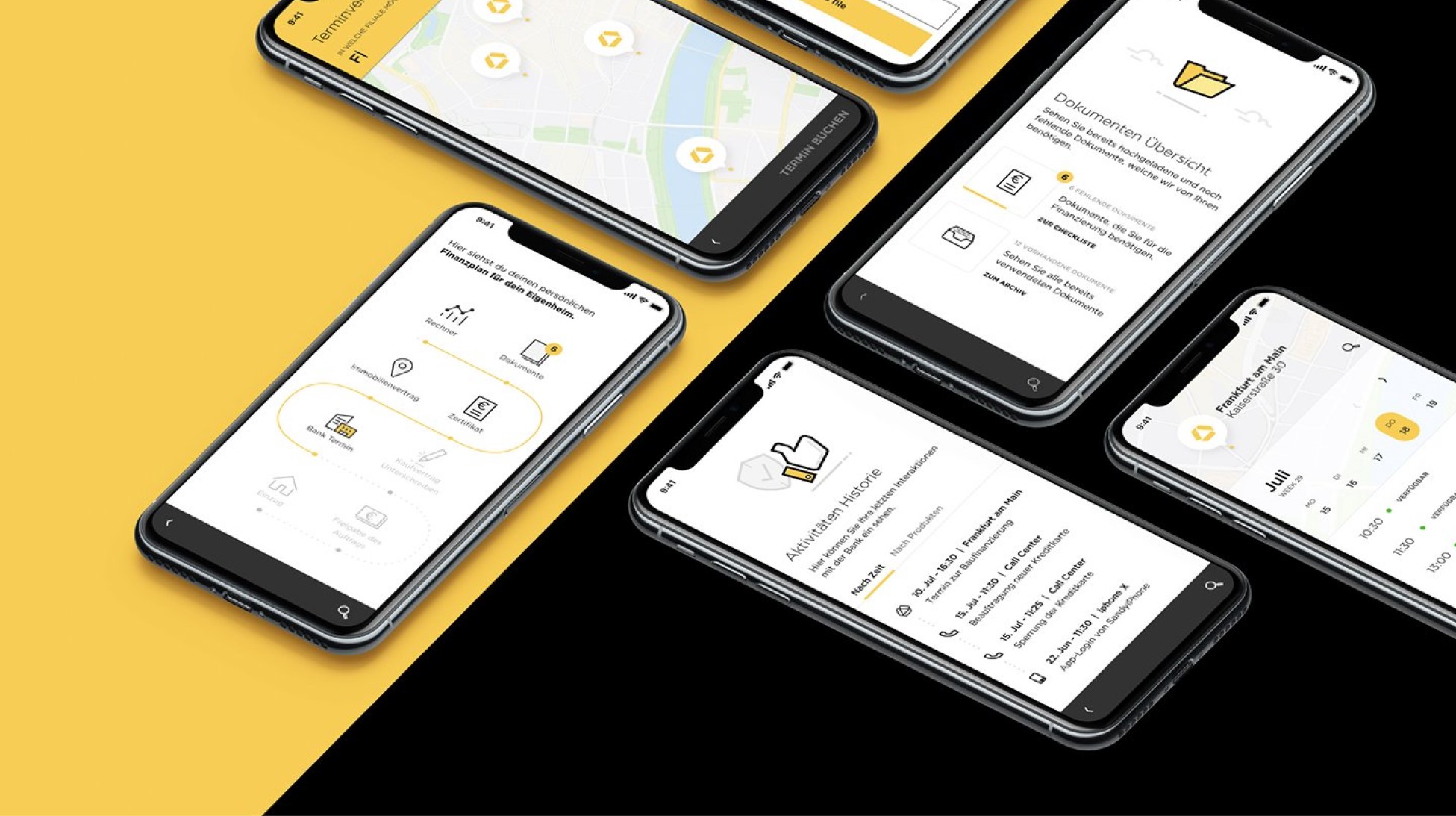Industrial design

Versatile, dynamic, complex and forward-looking: The range of fields of activity in industrial design is wide - and is constantly evolving. Traditionally, it encompasses the design and development of specific objects or product systems. These can include household, communication and medical devices, computers, furniture and entire room systems, vehicles and much more. It can be said that most of the products that surround us originate from industrial design.
At the same time, industrial design deals with strategic design solutions - the planning, development, renewal and communication of interactions, processes and services. This is often done in co-operation with industry, service, institutions or research.
The know-how of future-oriented industrial design is particularly needed for the major issues of this century, digitalisation and overcoming the climate crisis: How, for example, can the idea of a responsible approach to digitalisation find its positive counterpart in our product and living environments? - Smart and inclusive design strategies and solutions are needed.
Companies can no longer respond to demands for sustainability and ecology with individual products alone. Questions are becoming more complex today and are more likely to be: What does a company's "sustainable journey" look like? - In addition to value-orientated aesthetics, it is therefore also important to offer a high level of sensitivity for comprehensive sustainability issues - in addition to ecological, CO2-neutral products, entire production and economic concepts that reduce the environmental impact and promote the circular economy. The responsible use of materials and resources, the exploration of recycling and upcycling potential is part of a new product development and design process.
Improving people's lives
Traditionally, industrial design has developed from the requirements of industrial, serial production of consumer and capital goods. Today, it is aesthetic, ergonomic and technical aspects as well as economic, cultural, social - and recently even biological - dimensions that make industrial design a highly interesting, progressive discipline for improving people's lives on this planet - and perhaps soon in other universes too!

Study Industrial Design at Darmstadt University of Applied Sciences
What will the world look like tomorrow? What will we need? Which products, which materials, which processes and structures will accompany us and how? - The contexts in which we live are changing rapidly. If you study Industrial Design at Darmstadt University of Applied Sciences, you will discover an open, networked field of study that continuously deals with the current, often interdisciplinary issues of our time and the potential of innovation and reorganisation.
By learning solid design skills based on both artistic processes and scientific-theoretical reflection, students are prepared for the diverse professional requirements and trained to become committed, agile and critical industrial designers.
Our graduates have always worked successfully both nationally and internationally in a wide variety of fields. We provide the necessary skills and tools to give students the best career prospects.
What we offer students
- the promotion of individual skills and interests in the field of industrial design
- the development of methodical, creative thinking
- the development of an authentic creative expression
- different approaches to design through lively discourse in small design groups
- interdisciplinarity on many levels
- Future-orientated, far-sighted projects and topics
- excellent teachers
realistic training - Networking with the national and international design scene
the start of an exciting and attractive career shaping the world with innovative and useful products - diverse career opportunities in various industries, from consumer goods to the automotive industry to medical devices

What we expect from students
- Openness to shaping changing life contexts
- Interest in interdisciplinary projects
- Design excellence
- Problem-solving orientated attitude
- Interest in holistic judgement and planning
- Orientation of designs with regard to sustainability, ecology
- Durability of form and construction
- Interest in environmentally compatible concepts for distribution, subsequent use and disposal
The structure for your degree programme
The Communication Design degree programme is divided into basic and advanced studies and concludes with a diploma after 8 semesters of standard study time.
The basic study programme focuses on fundamental knowledge and skills as well as orientation. The main study programme focuses on creative projects, which are accompanied by a broad range of subjects up to the diploma.

Broadening horizons
Practical experience in design offices, agencies or industry is required for professional orientation and is guaranteed by a compulsory internship semester in the 5th semester. The University of Applied Sciences supports students in their search for internships.
After the foundation course, it is also possible to spend time abroad at one of our partner universities in (x) countries in order to broaden cultural and professional horizons and gain experience in an international environment.
Basic studies
Design principles
The teaching of design fundamentals in the first year of study is a sensitisation of the students encompassing all senses and includes initial design projects: Questions about principles of perception, order, structure, handling and their own creative expression are dealt with in dialogue (editor's note/question of understanding: what exactly is meant by dialogue here?
By recognising formal and functional design principles, students learn about possibilities. They try out different ways of realising their ideas - both abstract and concrete - resulting in object-based, process-based and situational design approaches.
Students develop and experience different ways of thinking, learn to weigh things up and make design-relevant decisions - always from the perspective of contemporary issues. As far as possible, the specialist specialisms of colleagues are incorporated by means of short projects in the areas of ergonomics, theory, technology and interaction.
All work is iteratively linked. Weekly project topics deepen creative empathy and individual action. Students should start their second year of study with a well-founded sense of possibility, or, to quote the philosopher Peter Sloterdijk - "...with the anticipation of themselves."
Lecturers: Prof Sabine Winkler
Presentation methods and techniques
The focus is on familiarising students with different ways and means of depicting ideas and possibilities and making them available.
Learning and testing the principles of research, documentation and presentation. Design ideas are developed on the basis of illustrations, process representations, handling simulations, construction representations and the recognition of system interrelationships.
Learning objective: To develop projections from considerations in order to be able to make design decisions.
Drawing/Display
The connections between observing and perceiving natural phenomena, their representation in drawings and the development of the imagination are thematised. This takes place alternately "drawing from nature" and "from the imagination". Explorative and analytical drawing by observing materiality, form, movement, plasticity, spatiality and perspective aims to interpret and comment on what is seen in a drawing.
The free handling of the drawing enables the development of an individual drawing language, a form of expression and communication through impressive, constructive and expressive-intuitive methods.
Learning objective: To utilise drawing and representation skills in the form of notes in the development of design ideas and to apply them in a creative manner. Drawing is understood as a means of form-finding and form development as well as the representation of ideas, variants and processes.
Descriptive geometry
The course trains students' spatial understanding and teaches rules for a constructive approach to visualisation. Parallels are always drawn with the concrete design process in order to illustrate the importance of drawing as a means of expression in design work.
Practical exercises encourage a free and at the same time knowledge-based approach.
Learning objective: To express one's own creative visions appropriately and convincingly
Main study programme
The skills and knowledge acquired in the basic design and theoretical subjects of the foundation course - research, brainstorming, realisation, staging and presentation - are applied in the design projects, which are assigned to the four teaching areas of Design and Ergonomics, Human-System Interaction, Design and Technical Design and Spatial Design. The basic knowledge is deepened and professionalised in practical application.
Megatrends, social and cultural trends, ecological necessities, social factors and technical possibilities - all of these play a role when considering new products and projects and are harmonised in the design process.
The design process plays an important role in the curriculum, as it is a continuous balancing act between one's own position and the expectations of all other participants - not only during the degree programme, but also later in professional practice. This is practised again and again, especially in the main course, in order to develop and consolidate one's own judgement and individual expression.
Design projects are presented by the respective professors at the beginning of each semester. Students are free to choose their own design projects, which take place in smaller groups to ensure an intensive exchange of ideas. The lecturers see themselves as mentors who guide students through the projects in a stimulating and constructive manner. Independent thinking, making, assessing, designing and rejecting are among the teaching aspects.
Design projects in five teaching areas
Design and ergonomics
Designing - opening up spaces for ideas, creating something profoundly new - is a fascinating and at the same time challenging process. Against the background of social trends, cultural tendencies, social and human factors as well as technical possibilities, designing is a continuous balancing act, also in later professional practice - between one's own position and the expectations and concerns of all those involved, especially those of the users.
In order to do justice to the creative potential of design and the individual needs of students, the variance of design tasks in the most diverse contexts is met with a design process that is not based on a universal framework of methods, but is tailored specifically to the requirements of the respective task.
The use of most products, objects or services requires human activity and/or influences human life: Therefore, understanding the anthropometric, physiological and psychological characteristics of humans, their capabilities, limitations and, last but not least, empathising with the needs of different user groups is an essential basis for design work.
While a systematic understanding enables the design to be considered in context, various research methods help to identify problems and design possibilities as well as to validate design results.
Lecturer: Prof. Tino Melzer
Spatial Design
An interdisciplinary course offered by the two degree programmes Industrial Design and Communication Design: Here, projects for exhibitions and productions in cultural and commercial contexts are developed across degree programmes - using spatial, atmospheric, sensory, visual and scenographic means.
The competence in the design and perception of spaces and interiors enables students to work as exhibition designers in museums, cultural institutions and specialised design agencies, but also provides an ideal basis for the design of working environments, hotel interiors and much more.
Lecturers: Prof. Tobias Katz
Design and theory
Design universities are not vocational schools, but creative places where new technologies, life models and economic practices are analysed and reflected upon theoretically and historically. It is important to research the constant development of these contexts in order to understand the social challenges and creative scope for action that result from them. This is particularly necessary because new technologies and business models do not always contribute to improving living conditions as a matter of course.
In this sense, exemplary design projects can be understood as concrete, critical and creatively avant-garde visualisations that have the potential to positively influence our future lives with foresight. This requires future designers to understand the bigger picture and be able to respond responsibly to the needs of society.
Well-developed design skills complement the frequently practised analytical-planning problem-solving strategies with artistic-intuitive thinking. It thus opens up expanded dimensions of knowledge that enable unconventional and innovative approaches and must therefore be developed in a targeted manner during training. It should always be borne in mind that intuition can be transformed into knowledge, but intuition cannot be generated from knowledge.
Lecturer: Prof Justus Theinert
Human-system interaction
Designers today not only design individual products, but increasingly business ecosystems consisting of hardware, software and services. While products used to consist of mechanical and electrical parts, today they have become smart, networked products or cyber-physical systems. These expand value creation and at the same time lead to an exponential increase in primarily digital human-technology interfaces in everyday life.
Designing their interfaces is an essential design task. This involves the user-friendly design of systems that create data-driven and personalised experiences and ideally function seamlessly across all relevant touchpoints and technologies. Here, the designer must incorporate the experience contexts, the economic aspects and the technological contexts into the design of human-centred technology interaction and solve formal, functional and ergonomic subtasks.
The teaching portfolio includes practical design support in project work on the conception and design of digital experiences, as well as experimental exercises and lectures on human-technology interaction. The basics of interface design and user experience design are taught, as well as teaching content on the usability of human-machine interfaces.
The design topics change every semester and include the design of graphical user interfaces, voice interfaces, brain-computer interfaces and the design of immersive experiences in mixed reality. Digital prototyping and the experimental exploration of current digital technologies and their reflection in design are also part of the necessary examination.
Lecturer: Prof Philipp Thesen
Draft and technical design
Courses aim to promote students' creative talent and systemic thinking in the context of complex issues: They are taught ways to be innovative, interdisciplinary and to use new technologies - always taking into account key social issues. They also learn about the opportunities and potential that they will have as future designers in order to be able to respond to today's dynamic challenges.
The courses consist of lectures combined with project work in which students develop solutions and systems for comprehensive issues and master complex technological and design tasks.
In the design process, analysis and construction methods, new technologies and knowledge of manufacturing and production processes are deepened, taking materiality into account. The investigation of mechanical and electromechanical issues and their interactions as well as the development of a production-orientated, sustainable product are focal points. Interdisciplinary cooperation with engineering degree programmes, social sciences and humanities and external companies are a regular part of the courses.
Lecturers: Prof Tom Philipps

Various topics are addressed here in order to make the broad field of activity of the industrial designer accessible and to experience it from different perspectives.
Both compulsory and elective courses are offered here. This gives students the opportunity to acquire further basic knowledge and to specialise according to their individual wishes.
Technical design
Within the framework of project work, students acquire the ability to solve more complex technological and design-oriented tasks. design methods
Knowledge of manufacturing and production processes, taking into account the choice of materials and their specific properties Mechanical principles and their interactions Development of production-orientated products
Graphic design
With the acquired basics of typography (foundation course), students develop individual graphic works in practical projects at the interface of communication and industrial design.
Packaging designs, process graphics, information graphics, digital user interfaces, apps, pictograms and icons for products
Presentation techniques
How do you present a finished project or a concept that is still under development? In addition to a clear structure in the presentation process, vivid illustrations and simulations are just as important as a confident demeanour and the right rhetorical tools. Those who are rhetorically trained know the connections between their own speech and its effect on the audience. Emphasis, pace of speech, breathing technique and body language are trained as means of expression. To support the speech, the use of presentation tools such as projector presentations or presentation posters is practised.
Design and technical drawing
- Teaching the basics of design-accompanying construction.
Recognising interactions between product design, construction, manufacturing technologies and materials - Basic knowledge of creating and reading technical drawings
Practising non-verbal communication skills via drawings - including across language barriers - Training in the improvement of 3-dimensional visualisation skills
Theory/Science
Mastering the complex challenges of our time requires a deep understanding of where we started: Solid, practical design expertise is enriched by exciting design history, insights and views: Theoretical and scientific subjects are therefore important components of the industrial design degree programme in Darmstadt.
These courses focus on independently reflecting on theoretical arguments and scientific research on design-relevant topics at a high level. This skill also contributes to the assertiveness of convincing designs and presentations. In addition, students in this area learn about the legal and economic framework conditions of their work.
Test and experience design virtually: design.h-da.de/human-factors-lab
The Human Factors Lab, which was founded exclusively at Darmstadt University of Applied Sciences and is equipped with state-of-the-art technology, gives students the opportunity to explore digital technologies and their application in the development phase using networked hardware and software equipment in real-life situations. With the help of digital sensors and virtual 3D visualisations, employees and students work on real-time prototypes and modelling in mixed reality.
The lab serves to expand and deepen the teaching content in the field of human-technology interaction and human factors. It also acts as a co-operation platform between design, science and industry.
History and theory of design
To provide insights into the history of product design that illustrate how lifestyle and the design of the living environment are interlinked.
historical observations to develop an open and in-depth understanding of our culture in order to develop ideas beyond current fashions and trends
Tools for further independent analysis of detailed questions of design history
Practising critical thinking: How can design-related questions be deciphered intellectually? What characterises conceptually clear and logically coherent statements? When are arguments about design valid? What argumentative value do observation and experience have? What role do scientific research methods and results play? What relevance do design theory findings have for design practice?
Planning methodology
We plan and control - consciously or unconsciously - our design process. The course shows what possibilities exist to organise your own design process effectively and efficiently. The aim is to lay the foundation for an individual toolbox, an overview of methods so that they are available to all aspects and phases of a design. Laying the foundation for an individual toolbox that makes you want to use and improvise.
Ecology
Orientation in the current sustainability discourse, explicit reflection on the important role of industrial design in this context. Overview of the diverse concepts of sustainability and strategies for sustainable development Reflection on ethical issues relating to economic and value systems, the finite nature of natural resources and distributive justice.
Familiarisation with the Roadmap for Sustainable Business & Innovation as a structuring aid It helps to better locate valuable knowledge, terms, topics, discourse positions, best practice examples, tools and methods Conveying interdependencies along the entire value chain for a better understanding of sustainable business in order to be able to design ecologically, socially and economically viable concepts on this basis.
Law
Overview of industrial property rights such as patents and utility models, trade marks and design protection. Together with copyright law, they can offer far-reaching protection for creative achievements and flashes of inspiration. A look is taken at the legal texts, but the main focus is on discussing the practical implications in order to take away ideas for your own professional practice.
The basic legal regulations and practical aspects of design protection and copyright law will be analysed. What can be protected by a registered design or by copyright? How does the respective protection arise or how is it applied for? What rights and claims can be enforced against unauthorised imitators?
Technology and Computer-Aided Design
(CAD)
Students learn the basics of designing 3-dimensional objects with the help of software in courses that build on each other. The aim is to develop the ability to independently define, visualise and/or animate their own designs in CAD.
- Working with the NURBS modeller (Rhino) and the parametric modeller (SolidWorks)
- Visualisation/rendering (Keyshot/Blender)
- Designing objects with the help of generative algorithms (Grashoppe)
Three-dimensional representation techniques/model making
Students acquire a design-specific basic knowledge of 3-dimensional elaboration and realisation of design concepts.
Sensitisation with regard to suitable 3-dimensional processing forms
Refinement of quickly machinable materials.
Creation of preliminary and presentation models with the use of suitable tools and, if necessary, machine tools. Traditional machine tools from metal and wood processing as well as rapid prototyping machines (3D printers), laser cutters and CNC milling machines are available for this purpose
Workshop accreditation: students undergo workshop accreditation, which qualifies them to use the machinery and workshops independently and sensitises them to all relevant areas of occupational safety.
Ergonomics (Human Factors)
- Teaching knowledge about the anthropometric, physiological and psychological characteristics of humans, their abilities and limitations.
- Foundation course: familiarisation with different methods (workplace analysis, usability studies) in order to identify problems and design solutions.
- Advanced studies: Deepening system-analytical considerations and methods of qualitative and quantitative research.
- Human Factors Lab: Digital methods such as sensor-based motion tracking are used for the development and validation of design solutions.
Aesthetic theory
Promoting an understanding of design practice in its broad cultural context. The theoretical examination also aims to understand the historical context of design movements, styles and techniques and to draw conclusions for future fields of action - e.g. on the use of artificial intelligence or on the special features of creative and artistic development processes.
Critically questioning the interactions between design, society, civilisation and culture
How does design influence social norms and values?
What role does cultural diversity play in the design process?
How can aesthetic competence improve the quality of life?
Economy
Communicating the complex system of entrepreneurial business models and the interrelationships between the very different and relevant players. Creating a business model canvas: Based on a fictitious product, a path can be shown that, from an economic perspective, highlights all relevant aspects that are hypothetically necessary for a successful product launch.
Social psychology
- Imparting in-depth knowledge of scientifically based psychological findings that are relevant in the context of industrial design in order to understand the experience and behaviour of users.
- Findings from social and perceptual psychology and their application in the field of consumer behaviour, trend research, user experience research and persuasive design
- Developing, presenting and discussing key psychological findings on the basis of prepared scientific literature. Transferring the findings to the challenges of industrial design
- Deeper insights into the experience and behaviour of users, which is important for industrial designers and the basis for creating a user-oriented, convincing design
Basic skills in preparing and presenting scientific content and in conducting discussions; individual and targeted feedback is provided here
